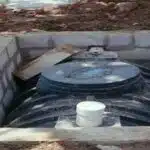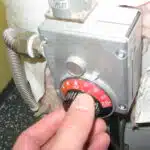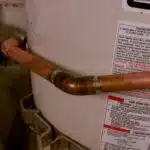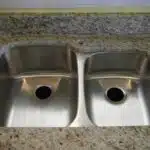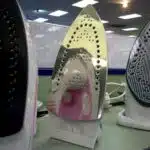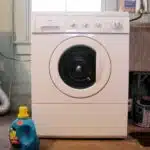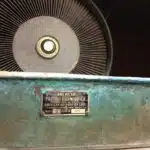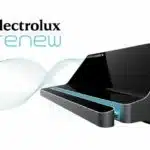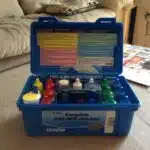Water softeners are an essential tool for households and businesses that aim to improve the quality of water. They remove hard minerals in water, such as calcium and magnesium, and replace them with sodium ions. This process results in soft water that is beneficial for both people and appliances.
Understanding how water softeners work is crucial for anyone who wants to ensure the longevity of their pipes, appliances, and overall plumbing system. In this article, we will explore the ins and outs of water softeners – from their basic components to their operation – so you can make informed decisions about your home or business water treatment needs. Whether you’re a homeowner looking to improve your tap water quality or a business owner interested in preventing scale buildup in your equipment, this comprehensive guide has got you covered.
The Importance Of Water Quality
Water is essential to life. It is a basic necessity of every living organism, and it is what makes our planet habitable. However, not all water sources are created equal. Water filtration has become an essential process to ensure that the water we drink is safe and free from harmful substances that can lead to health implications.
The importance of water quality cannot be overstated. Poor quality water can contain contaminants such as bacteria, viruses, chemicals, and heavy metals that pose serious health risks. These contaminants can cause illnesses such as diarrhea, stomach cramps, or even cancer in some cases. This is why water filtration systems have been developed to remove these harmful substances from the water we consume.
Water softeners are a type of filtration system designed specifically for hard water. Hard water contains high levels of minerals such as calcium and magnesium. While these minerals are not necessarily harmful to human health, they can cause problems with plumbing fixtures and appliances over time. Understanding hard water is crucial in determining the appropriate filtration system required to soften it before consumption or use in household activities like laundry or washing dishes.
Understanding Hard Water
Understanding the importance of water quality is crucial in maintaining a healthy and safe living environment. One aspect that affects water quality is the presence of minerals, such as calcium and magnesium, which can cause mineral buildup in pipes and appliances. This buildup, also known as hard water, can lead to costly repairs and decreased efficiency.
Identifying hard water sources is the first step in understanding how to combat mineral buildup. Hard water can be found in areas with high levels of dissolved minerals in the groundwater or surface water supply. In some cases, it may be caused by outdated plumbing systems or natural geological formations.
Understanding mineral buildup is essential in maintaining the longevity and efficiency of your home’s plumbing system. Mineral buildup can clog pipes, reduce water flow, and even damage appliances like dishwashers and washing machines. By identifying hard water sources and investing in a water softener system, you can prevent these issues from occurring.
- A faucet with white residue around its base
- Stains on clothing after washing
- Dry skin or hair after showering
- Spots on dishes after cleaning
With proper knowledge of hard water sources and mineral buildup prevention techniques, homeowners can protect their homes from costly repairs and maintain optimal water quality for their families. Next, we will dive into what exactly are water softeners and how they work to combat hard water issues.
What Are Water Softeners?
Welcome to the world of water softeners! If you’re tired of dealing with hard water problems, then you’ve come to the right place. As an expert in the field, I’m here to give you the lowdown on what water softeners are all about. Brace yourself for some mind-blowing revelations!
First off, let’s define what a water softener is. Simply put, it’s a device that removes minerals such as calcium and magnesium from hard water to make it soft. Hard water can cause numerous issues like clogged pipes, soap scum buildup, and dull clothes. But fear not! There are several types of water softeners available in the market today that can help address these problems.
Nowadays, there are three main types of water softeners: salt-based, salt-free, and magnetic. Salt-based systems are the most popular because they’re highly effective at removing minerals from hard water. However, they require regular maintenance and may not be suitable for those with sodium-restricted diets. On the other hand, salt-free systems use potassium or resin beads instead of salt to soften water but may not be as effective as their salt-based counterparts. Lastly, magnetic systems use magnets to alter the structure of minerals in hard water but have yet to prove their effectiveness in removing them altogether.
While these types of water softeners can solve your hard water woes, they also come with common problems such as clogging, leaks, and malfunctioning valves. Don’t worry though; these issues can easily be resolved by a professional technician like myself. In fact, regular maintenance is necessary to keep your system functioning properly and extend its lifespan.
Now that we’ve covered what water softeners are and their different types and problems let’s move on to discussing their components in detail. So sit back and relax while I take you on a journey through the inner workings of a typical water softener system!
The Components Of A Water Softener System
In understanding how a water softener works, it is important to first understand its components. A typical water softener system consists of a mineral tank, a brine tank, a control valve, and a bypass valve. The mineral tank is the primary component that houses resin beads responsible for removing hard minerals from the water.
Water softener maintenance is crucial to ensure optimal performance. One common issue with water softener systems is salt bridging in the brine tank. This occurs when there is an accumulation of salt on the bottom of the tank, preventing the proper regeneration of resin beads. Regular cleaning and inspection can prevent this issue from occurring. Another issue is low water pressure caused by clogged resin beads or blocked valves. A professional technician can diagnose and fix these issues.
Common installation issues include improper sizing of the system and incorrect placement of components. An undersized system will not effectively remove hard minerals, while an oversized system can lead to wasted resources and higher energy bills. Incorrect placement of components can also lead to reduced efficiency and potential damage to other household appliances. It is crucial to consult with a professional technician during installation to ensure proper sizing and placement.
Moving forward, understanding how water softeners work involves delving into the process of ion exchange between hard minerals and resin beads in the mineral tank. This process involves exchanging sodium ions for hard mineral ions such as calcium and magnesium, resulting in softened water that benefits both households and appliances alike. Proper maintenance and installation are key to ensuring optimal performance and longevity of your water softener system.
How Water Softeners Work
Picture this: You’re in a kitchen filled with dirty dishes, pots, and pans. The water you use to wash them is hard, meaning it contains high levels of minerals like calcium and magnesium. As you scrub away at the dishes, the minerals react with the soap to form a sticky scum that refuses to come off. This is where water softeners come into play.
Water softeners work by removing the minerals that cause hard water. They do this through a process called ion exchange, which involves swapping out the calcium and magnesium ions for sodium ions. This prevents scale formation in your pipes and appliances, as well as leaving your skin and hair feeling softer after showering.
The effects of water hardness are not just limited to dirty dishes and clogged pipes. Hard water can also lead to higher energy bills due to reduced efficiency in heating systems, increased wear on clothes from hard washing water, and even dry skin from mineral buildup. By preventing scale formation, water softeners save you money on repairs and replacements while improving your overall quality of life. In the next section, we will delve deeper into the ion exchange process used by most water softeners to achieve these benefits.
Ion Exchange Process
As previously discussed, water softeners use a process called ion exchange to remove hard minerals from water. This process involves exchanging sodium ions for calcium and magnesium ions, which are responsible for the hardness in water. But what are the benefits of this method, and are there any alternatives?
Ion exchange has several advantages over other methods of water softening. First and foremost, it is highly effective at removing hard minerals from water, leaving it much softer and more pleasant to use. Additionally, ion exchange is a relatively low-maintenance method that can be easily automated using modern technology. Finally, the resulting softened water is better for household appliances like washing machines and dishwashers, as it helps prevent buildup of mineral deposits.
While ion exchange is the most popular method of water softening, there are alternatives available as well. For example, reverse osmosis uses a membrane to filter out impurities in the water including hard minerals. However, this method can be expensive and time-consuming compared to ion exchange. Another alternative is magnetic or electronic descalers which claim to soften water by altering its molecular structure through the use of magnets or electrical fields. However, the effectiveness of these devices is still subject to debate within the industry.
Moving forward into our next section on regeneration cycle, it’s important to note that even with its many benefits, ion exchange requires regular maintenance to continue working effectively. This includes a process known as regeneration which replenishes the resin beads used in the ion exchange process. In order to understand this process fully and maintain your water softener properly, let’s take a closer look at what happens during regeneration cycle.
Regeneration Cycle
One interesting statistic regarding water softeners is that they can potentially save homeowners up to $200 a year on energy bills. This is because hard water causes appliances like washing machines and dishwashers to work harder, using more energy and shortening their lifespan. A water softener can help prevent this by removing the minerals that cause hard water.
The regeneration cycle is an essential component of a water softener’s function. During this process, the resin beads inside the tank are cleaned of any minerals they have collected and then recharged with sodium ions. It’s important to perform regular water softener maintenance to ensure that the regeneration cycle is working correctly. Neglecting this step could cause problems down the line, such as reduced efficiency or damage to the unit.
If you’re experiencing issues with your regeneration cycle, there are a few troubleshooting steps you can take before calling in a professional for repairs. First, make sure that there is enough salt in the brine tank. If there isn’t enough salt, it won’t be able to regenerate properly. Additionally, check that the valve settings are correct and that the timer is functioning correctly. If these steps don’t solve the issue, it may be time to seek out professional water softener maintenance or repairs.
| Issue | Possible Cause | Solution |
|---|---|---|
| No Soft Water | Lack of Salt | Add Salt |
| No Soft Water | Clogged Resin Bed | Clean Resin Bed |
| Salt Tank Full of Water | Brine Line Blocked or Kinked | Clear Blockage or Straighten Kink |
| Unit Runs Continuously | Timer Motor Failed or Timer Cam Stuck | Replace Timer Motor or Reset Timer Cam |
Moving onto types of water softeners, there are several different options available on the market today. Each type has its unique features and benefits, so it’s crucial to research which one will work best for your specific needs. From salt-free systems to magnetic water softeners, the possibilities are endless. In the following section, we’ll explore some of the most popular types of water softeners on the market today.
Types Of Water Softeners
During the regeneration cycle, a water softener system cleans itself by flushing out the accumulated minerals from the resin bed. This process involves backwashing and brine solution regeneration. Backwashing involves reversing the flow of water to flush out any debris and sediment that have settled in the resin bed. After backwashing, a brine solution is introduced into the resin tank to regenerate the system. The brine solution dissolves and flushes out all the hard minerals that have been collected by the resin beads.
There are different types of water softeners available in the market today, such as salt-based systems, salt-free systems, dual-tank systems, and magnetic or electronic systems. Salt-based systems use a process called ion exchange to remove calcium and magnesium ions from hard water. Salt-free systems, on the other hand, use a template-assisted crystallization process to convert hard minerals into crystal particles that cannot adhere to surfaces. Dual-tank systems combine both processes of salt-based and salt-free methods. Magnetic or electronic systems use magnets or electric fields to alter the molecular structure of minerals in hard water.
Each type of water softener has its pros and cons that depend on individual preferences, household needs, budget constraints, and environmental concerns. For instance, salt-based systems are highly effective but require regular maintenance and add sodium content to softened water. Salt-free systems are eco-friendly but may not be suitable for extremely hard water conditions or larger households. Dual-tank systems offer flexibility but can be expensive upfront. Magnetic or electronic systems do not require salts but may not work well with all kinds of pipes or plumbing configurations.
Transitioning into our next section about benefits of soft water – did you know that using soft water can significantly reduce your monthly bills? From lower energy bills due to improved appliance efficiency to reduced cleaning costs because soap lathers better in soft water – there are many reasons why choosing a reliable water softener system is an investment worth considering for your home.
Benefits Of Soft Water
Imagine a world where every surface is covered in a thick layer of grime that you can never seem to scrub away, no matter how hard you try. This is what hard water can feel like in your home. Hard water contains high levels of minerals such as calcium, magnesium, and iron which can leave behind unsightly stains on your clothes, dishes, and even your body. Fortunately, there is a solution to this problem: water softeners.
Soft water not only looks and feels cleaner but also has numerous health benefits. For example, soft water is gentler on the skin and hair, making it less likely for individuals with sensitive skin to experience irritation or dryness. Additionally, studies have shown that individuals who consume soft water are at a lower risk for heart disease than those who consume hard water due to the reduced intake of minerals such as calcium and magnesium.
Aside from improving your health, installing a water softener can also extend the lifespan of your home appliances. Hard water can cause buildup in pipes and appliances such as washing machines and dishwashers which can significantly reduce their efficiency over time. By investing in a water softener system, you can save money on repairs or replacements down the line while also enjoying better overall performance from your appliances.
- Soft water improves skin condition
- Drinking soft water reduces the risk of heart disease
- Home appliances last longer with soft water
- Saves money on potential future repairs or replacements
Taking care of your new investment is crucial for maintaining its effectiveness over time. In the next section, we will discuss maintenance and upkeep tips for ensuring that your water softener continues to provide you with all of these amazing benefits year after year without fail.
Maintenance And Upkeep
Cleaning a water softener is essential for maintaining peak performance, and can be done with a soft brush and a mild, non-abrasive cleaner. Troubleshooting a water softener can be done by checking for improper salt levels, regeneration cycles that are too frequent, clogged filters, and potential leaks. Checking water quality and hardness levels is an important part of regular maintenance, as is examining the resin bed for any issues that may be causing a blockage. Lastly, it is important to check and adjust the system settings and carry out periodic sanitization, as well as check for issues such as salt bridging, overfilling, and loud noises.
Cleaning
When it comes to water softener maintenance, cleaning is an important aspect that should not be overlooked. Over time, common contaminants such as iron, magnesium, and calcium can build up in the resin tank of your water softener. This buildup can cause a decrease in the efficiency of your system and may lead to damage if left uncleaned.
There are various cleaning techniques available for different types of water softeners. One common technique involves using a specially formulated cleaner designed for the specific type of water softening system you have. This cleaner is typically added to the resin tank and allowed to sit for a specified amount of time before being flushed out with clean water.
Another effective cleaning technique involves manually removing the resin beads from the tank and washing them thoroughly with a high-pressure stream of water. This method is particularly useful when dealing with heavy buildup or stubborn contaminants that cannot be easily removed with chemical cleaners alone. By properly maintaining and cleaning your water softener, you can ensure that it continues to function correctly and provide you with the softened water you need for years to come.
Troubleshooting
As a water softener expert, it is important to discuss the common issues that homeowners may encounter with their water softening systems. One of the most common issues is a decrease in water flow or pressure. This can be caused by a clogged resin tank or a malfunctioning control valve. Another issue that homeowners may face is the presence of hard water despite having a functioning water softener. This can be due to insufficient salt levels or an improperly calibrated system.
In order to troubleshoot these issues, there are DIY solutions available for homeowners. For low water pressure, checking and cleaning the resin tank and control valve can often improve flow and pressure. Additionally, ensuring that proper salt levels are maintained and adjusting the calibration settings on the system can help alleviate problems with hard water. However, if these DIY solutions do not work, it may be necessary to contact a professional technician for further troubleshooting and repair.
By addressing common issues and providing DIY solutions, homeowners can effectively maintain their water softening systems and enjoy softened water without interruption. As experts in the field, it is our duty to educate homeowners on how to properly care for their systems and troubleshoot any issues that arise along the way.
Installation Considerations
When installing a water softener, there are several considerations that need to be taken into account. One of the most important considerations is the level of water hardness in the area where the water softener will be installed. Water hardness testing should be performed before installation to ensure that the correct type and size of water softener is selected. A professional installer can perform this test and recommend the appropriate system for your needs.
Another important consideration when installing a water softener is the plumbing requirements. The location of the unit must be carefully considered, as it requires access to both a drain line and a power source. In addition, some systems may require additional plumbing modifications to ensure proper functionality. These modifications may include adding shut-off valves or installing bypass loops.
Proper installation of a water softener is essential for optimal performance and longevity of the system. It is highly recommended that installation be performed by a professional technician who has experience with these types of systems. By taking these considerations into account during installation, you can ensure that your water softener operates efficiently and effectively for years to come.
| Consideration | Description |
|---|---|
| Water Hardness Testing | Testing should be done before installation to determine which system is best suited for your needs |
| Plumbing Requirements | Location should allow access to both power source and drain line; additional modifications may be necessary |
| Professional Installation | It is highly recommended that a professional technician install your water softener for optimal performance |
With proper installation considerations taken into account, homeowners can enjoy softened water in their homes without any hassle or inconvenience. However, it’s important to note that while these systems offer many benefits, they do come at a cost. In the following section, we will explore various factors that affect cost and efficiency so that you can make an informed decision about whether or not investing in a water softener is right for you.
Cost And Efficiency
As the demand for water softeners increases, consumers are becoming more conscious of their expenses and the energy consumption that these appliances bring. While the initial cost of purchasing a water softener can be expensive, it is important to consider its cost benefit in the long run. A water softener works by removing hard minerals from water, which can reduce energy consumption by up to 29% in households. This means that by investing in a water softener, homeowners can save on their utility bills and help reduce their carbon footprint.
To further understand the cost benefit of owning a water softener, here are some key points to consider:
- Water heaters last longer with softened water since less sediment accumulates inside
- Softened water requires less detergent and soap compared to hard water, leading to savings on household cleaning products
- The lifespan of plumbing fixtures and appliances such as washing machines and dishwashers increase with softened water due to reduced buildup of minerals which can lead to breakage or malfunction
As a certified technician in the field of water treatment systems, I highly recommend investing in a high-quality water softener for those who want to save money on utility bills while also contributing towards a sustainable future. By considering its long-term benefits such as reduced energy consumption and increased lifespan of household appliances, purchasing a water softener is not just an investment but a smart decision for homeowners.
Looking beyond traditional salt-based water softeners, there are alternative options available for those who are concerned about their energy consumption or environmental impact. Let’s explore these alternatives further.
Alternative Water Treatment Options
There are several alternative options available for water treatment other than water softeners. One of them is water filtration. Water filtration systems work by removing impurities from water through a physical barrier, chemical process or biological process. This method not only removes hard minerals like calcium and magnesium but also eliminates contaminants like lead, fluoride, and chlorine from the water.
Another popular alternative to traditional water softeners is reverse osmosis. Reverse osmosis is a process that uses pressure to force pure water through a semi-permeable membrane while leaving behind impurities. This technology is highly effective in removing hard minerals, bacteria, and viruses from the water supply. However, it’s important to note that reverse osmosis systems require regular maintenance and can be more expensive than other treatment options.
When considering alternative water treatment options, it’s important to weigh the benefits and drawbacks of each option carefully. Depending on your specific needs and budget, one option may be a better fit than another. It’s also important to keep in mind that different areas may have different contaminants present in their water supply which may require different treatment methods. In the next section, we will discuss how to choose the right water softener for your needs based on factors such as household size, budget, and specific water issues in your area.
Choosing The Right Water Softener For Your Needs
When it comes to choosing the right water softener for your needs, there are a few factors to consider. One of the most important things to think about is water softener sizing. This involves determining the size of the unit that will be required to effectively soften the water in your home. Factors such as the number of people living in your home, your daily water usage, and the hardness level of your water supply all play a role in determining what size unit you’ll need.
Another important factor to keep in mind when selecting a water softener is water hardness testing. This involves measuring the level of hardness in your water supply so that you can choose a unit that’s capable of removing those minerals effectively. There are several different methods for testing water hardness, including using test strips or sending a sample off to a lab for analysis. Once you have an accurate measurement of your water’s hardness level, you can choose a unit with appropriate capacity and regenerating capabilities.
Overall, selecting the right water softener requires careful consideration and planning. By taking into account factors such as sizing and testing, you can ensure that you purchase a unit that’s capable of providing optimal performance for years to come. Whether you’re looking for improved skin health or simply want cleaner dishes and laundry, investing in a quality water softener is sure to make a positive difference in your day-to-day life.
Conclusion And Final Thoughts
Having discussed the importance of choosing the right water softener for your needs, let us now delve into the benefits and drawbacks of using water softeners. Just like any other appliance, water softeners come with their own advantages and disadvantages.
One of the primary benefits of using a water softener is that it helps eliminate hard minerals in your water supply, making it much softer. This results in soap lathering more easily, thus reducing the amount required for cleaning. Additionally, soft water has been shown to increase the longevity of household appliances by preventing mineral buildup and corrosion.
However, one drawback of using water softeners is that they can lead to an increase in sodium levels in your drinking water. This can be harmful to individuals with pre-existing medical conditions such as hypertension or heart disease. Moreover, some people may not appreciate the taste of softened water due to its high sodium content.
As a professional in the field of water treatment solutions, I can confidently say that despite these drawbacks, the benefits of using a water softener far outweigh any potential risks. By investing in a quality system that suits your specific needs and requirements, you can enjoy all the advantages that come with having access to clean and fresh-tasting softened water every day.
Conclusion
Water softeners are essential for improving the quality of water in homes and businesses. Understanding the difference between hard and soft water is crucial to identifying the need for a water softener system. The components of a water softener system include a resin tank, brine tank, control valve, and distributor tube. These components work together to remove calcium and magnesium ions from the water, which causes hardness.
The process of ion exchange involves replacing calcium and magnesium ions with sodium ions, which results in softer water. The cost and efficiency of a water softener system depend on factors such as size, type, and maintenance requirements. Alternative water treatment options include reverse osmosis systems and salt-free water conditioners.
Choosing the right water softener for your needs requires careful consideration of factors such as budget, household size, and water usage. Consulting with a professional technician can help you select the most appropriate system for your specific needs.
In conclusion, investing in a high-quality water softener system is an effective way to improve the quality of your home or business’s water supply. By understanding how these systems work and choosing an appropriate option based on your individual needs, you can enjoy softer, cleaner, and better-tasting water that benefits both you and your property. As an expert in this field, I highly recommend exploring different options available to find one that suits your unique requirements best.
Image Credits
- “Completed: Water Filter and Water Softener Installation” by William Herron (featured)



